
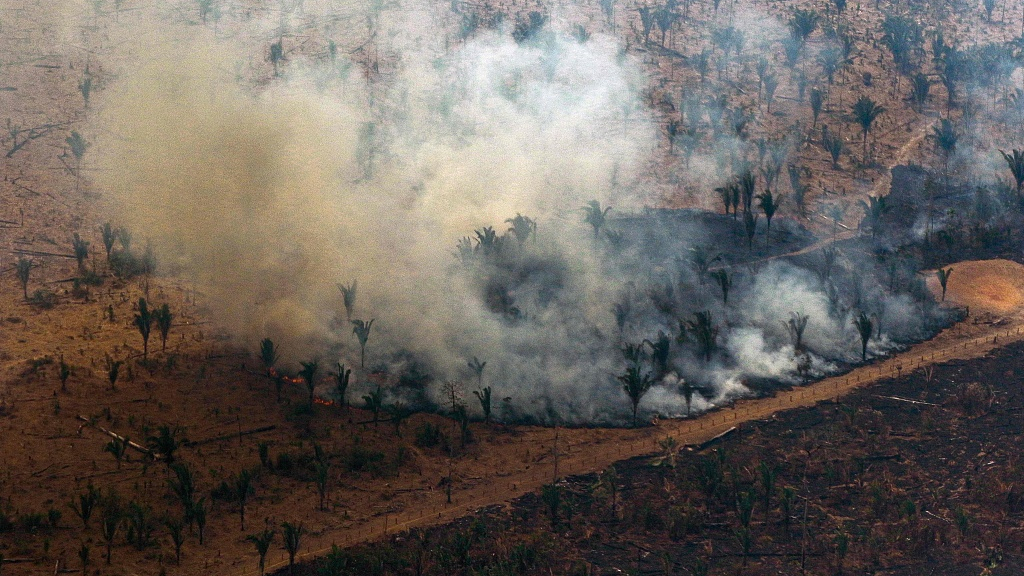
Some horrifying scenes of the burning Amazon rain forest. /VCG Photo
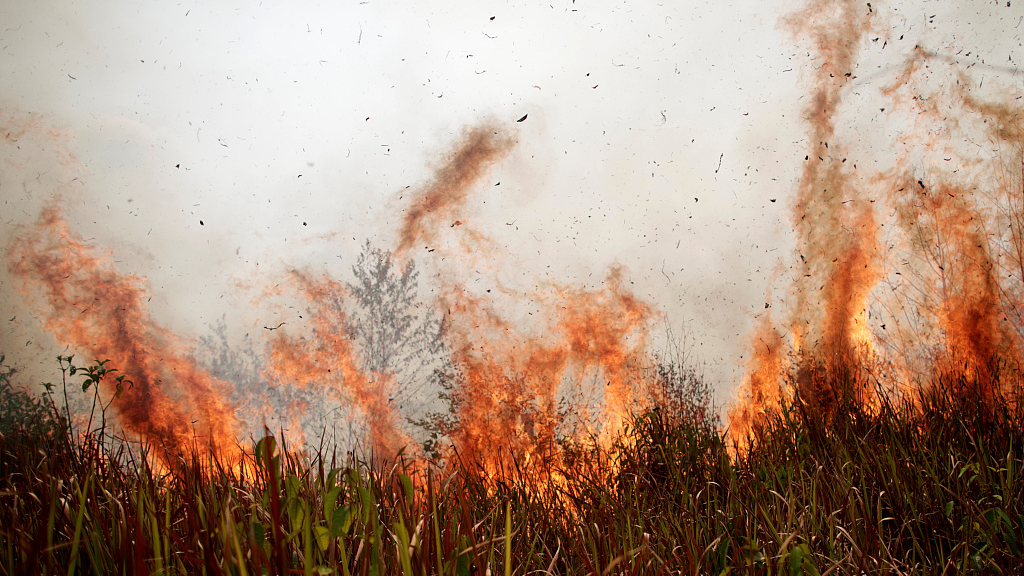
VCG Photo
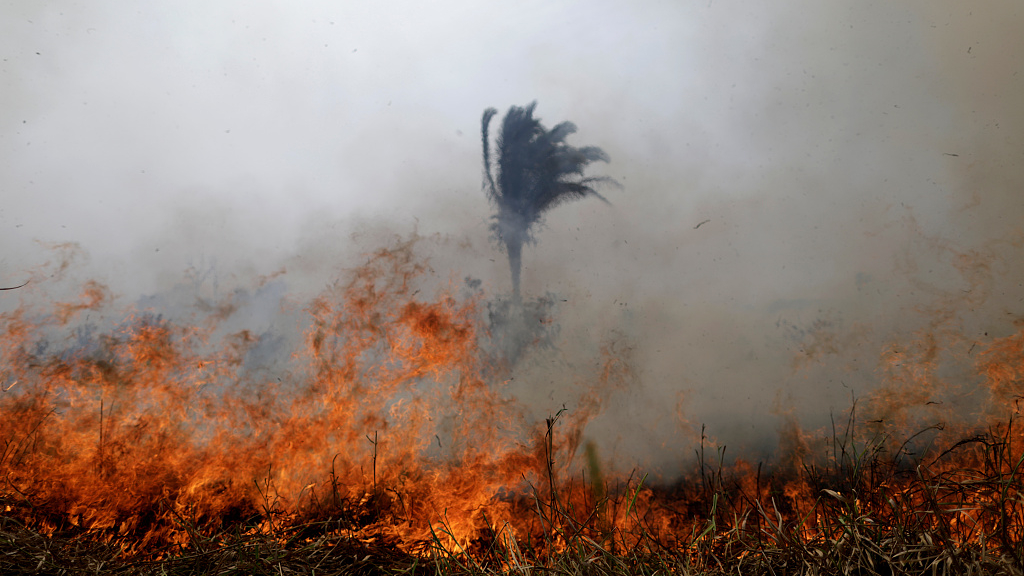
VCG Photo
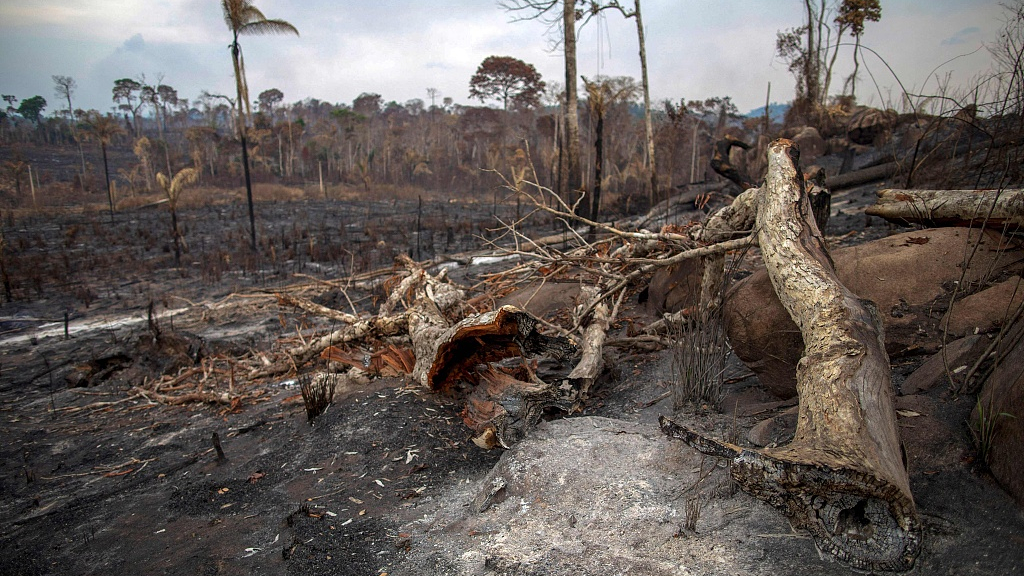
VCG Photo
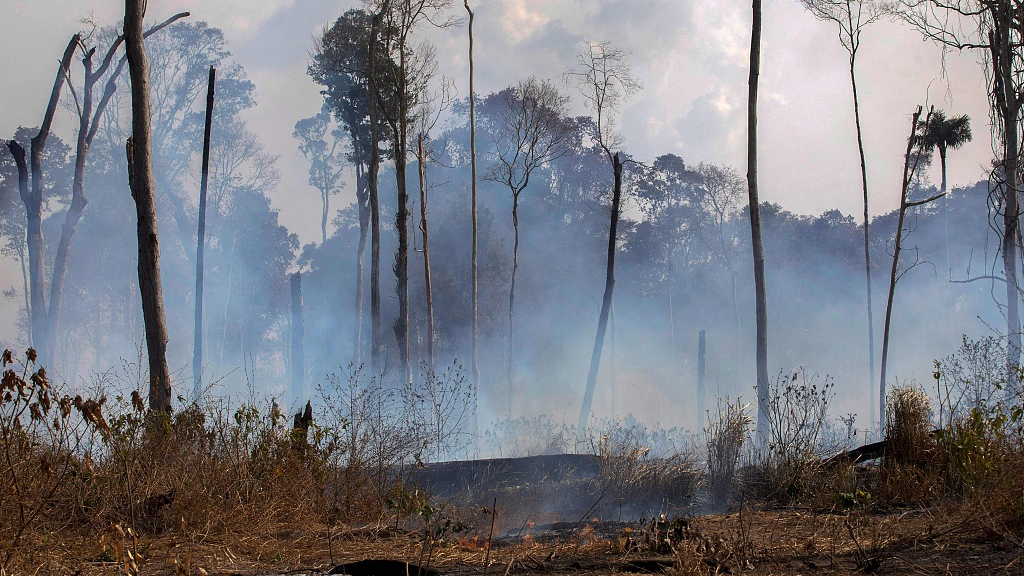
VCG Photo
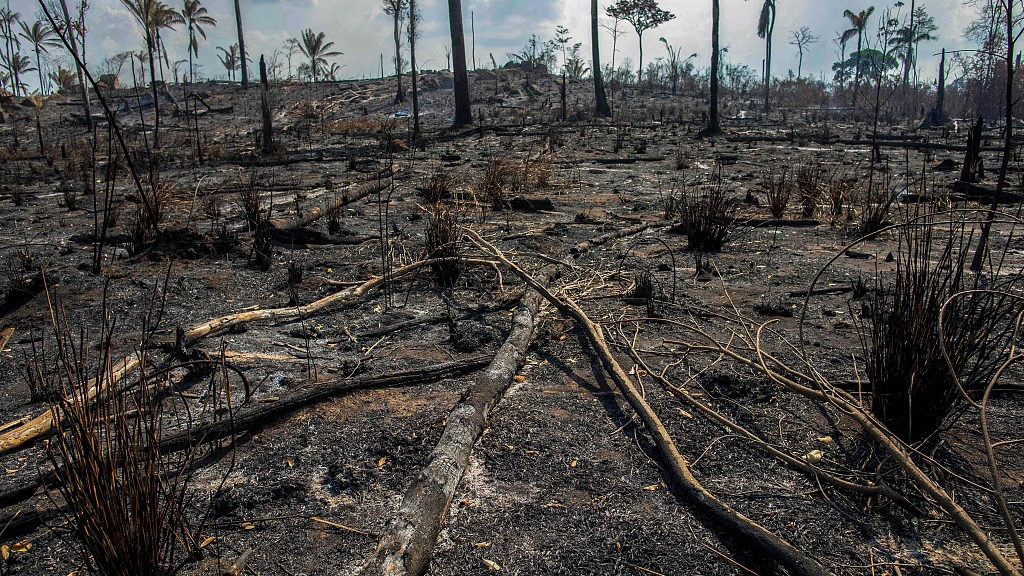
VCG Photo

VCG Photo
The pictures above show only a few scenes of wildfires raging in the Amazon rain forest. According to latest reports from AFP, 1,130 new blazes have flared up between the past Friday and Saturday, devouring many parts of the once lush and green forest. Typically, the Amazonia looks like in the pictures below during the rainy season:
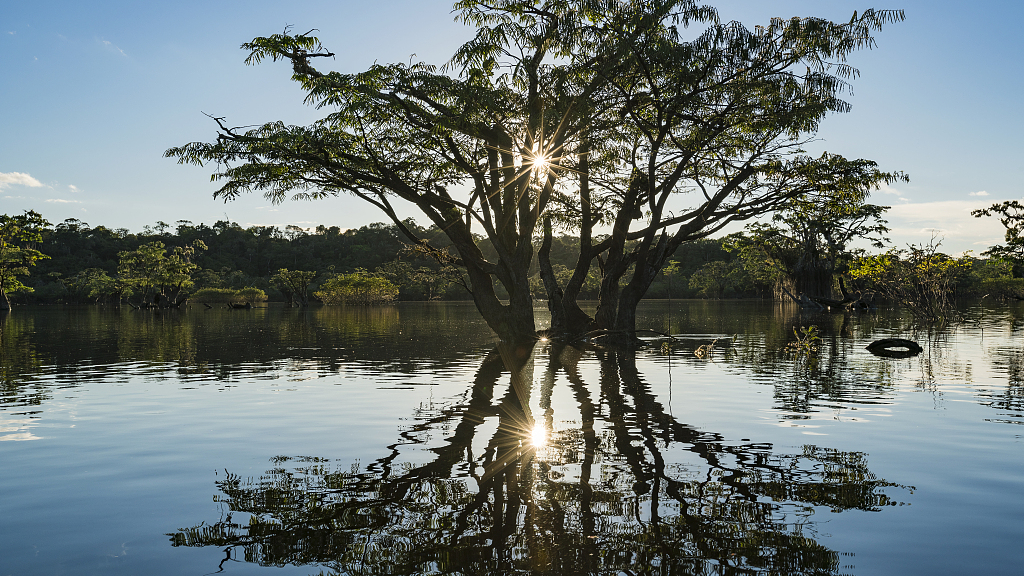
A healthy rain forest is full of water. /VCG Photo
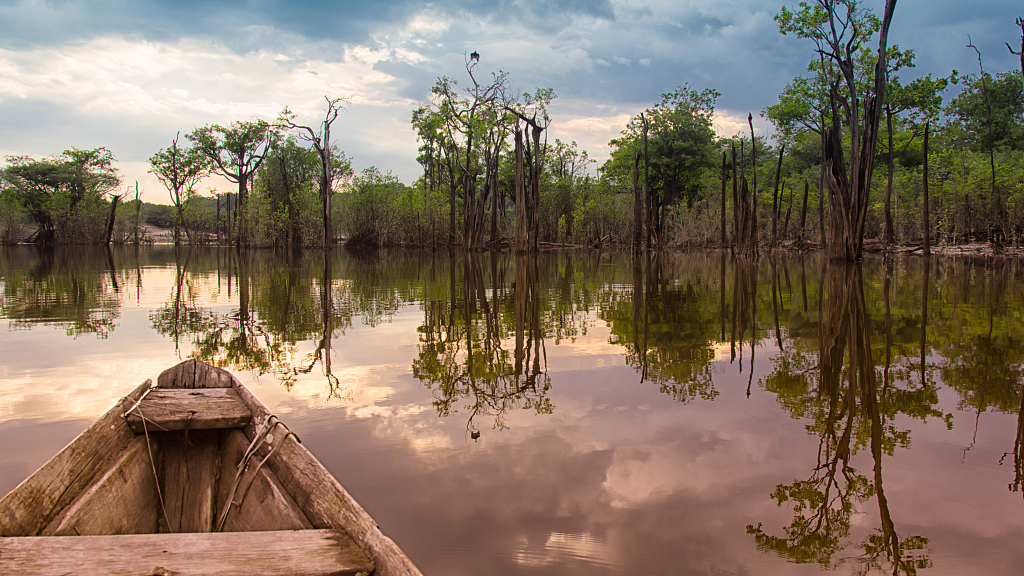
VCG Photo
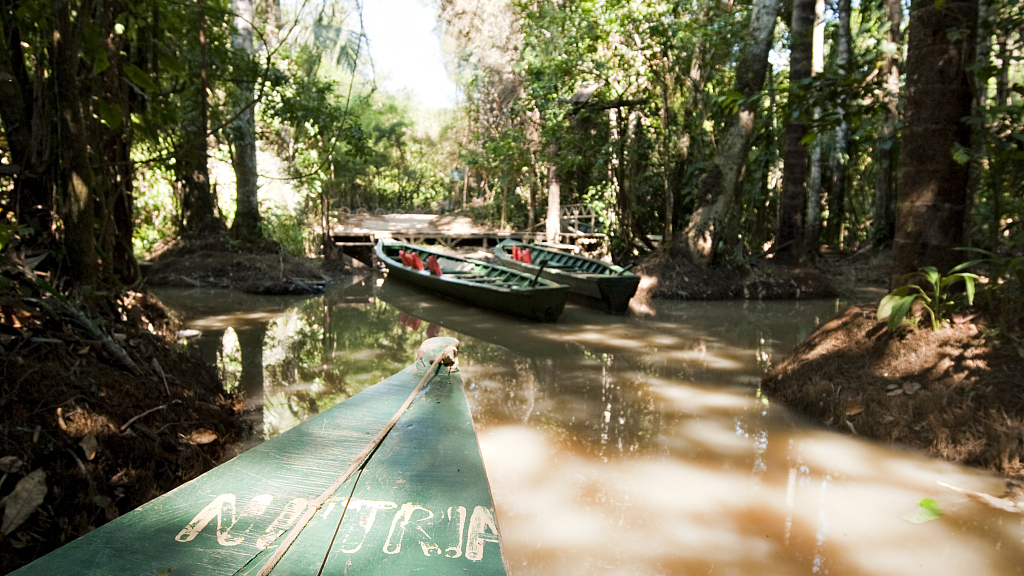
VCG Photo
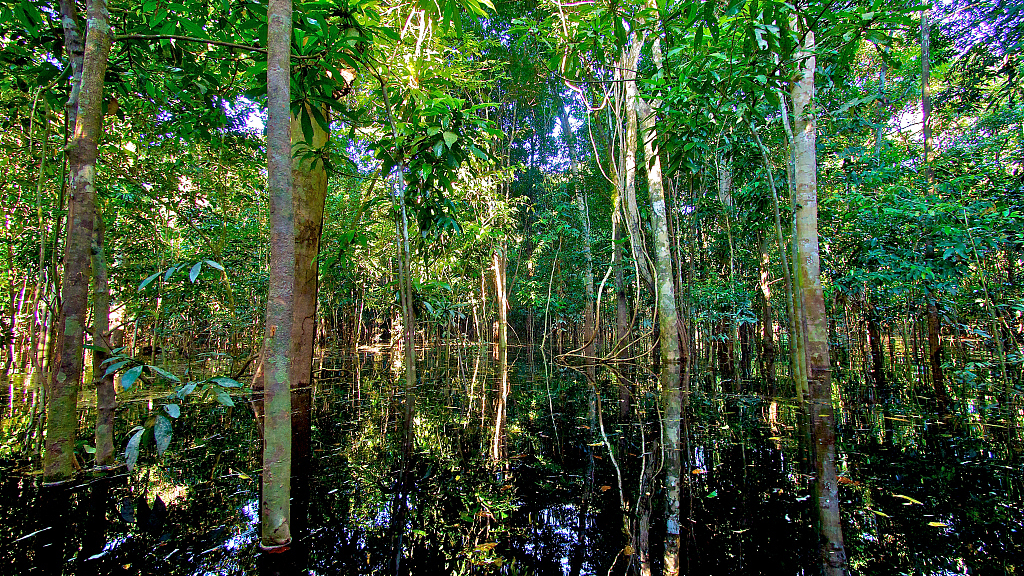
VCG Photo
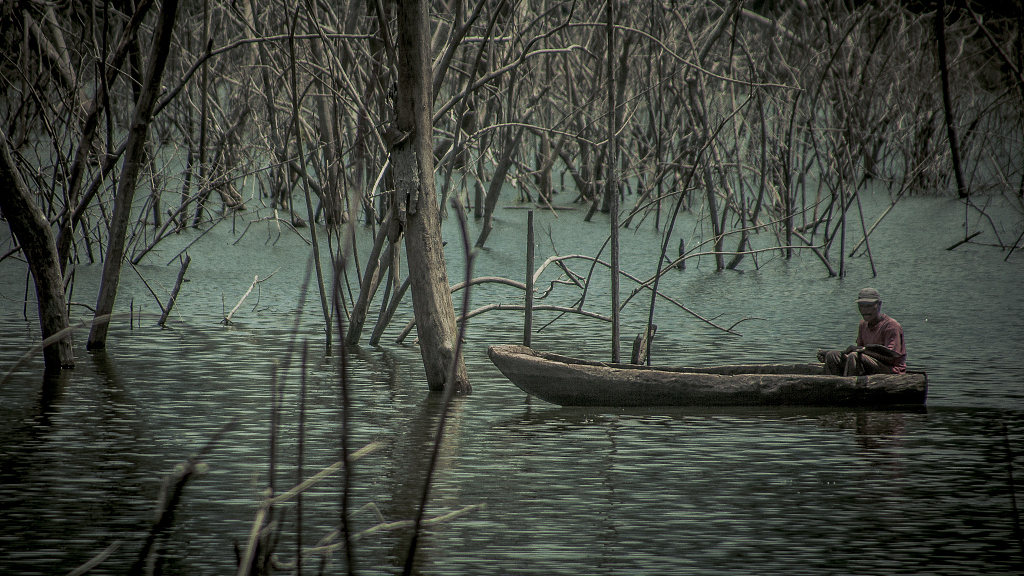
VCG Photo
You can see the trees are half soaked in water since the Amazon River and its streams meander through the area. You could even row a boat through the dense trees. So, how can a wet rain forest like the Amazon burn?
Why is the Amazon forest burning?
The Amazon forest burns every year. Locals clear the land to make way for crops or grazing; the method they use is simply setting the ground on fire. However, a tropical rain forest is generally not flammable. The dense plants in the rain forest are full of water, producing a massive amount of vapor. In this case, a healthy forest is almost fire-proof. Therefore, farmers have to cut down large areas of plants to ignite fires. As the plantation area is being reduced, fire destructions will be augmented to form a malignant loop.
In short, the dramatic scale of this year's fires is the result of a significant acceleration of deforestation.
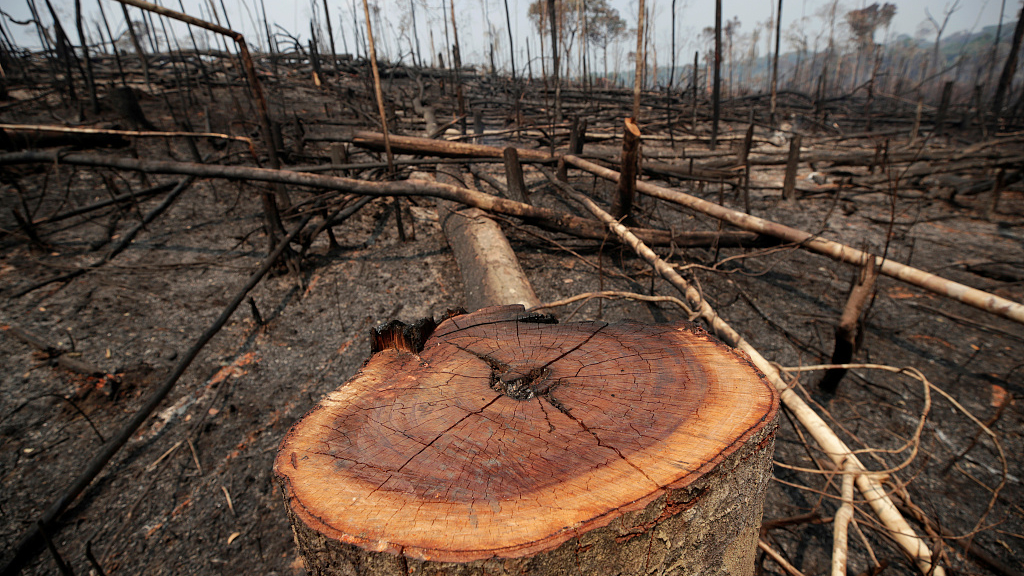
Charred trunks are seen on a tract of the Amazon jungle that was recently burned by loggers and farmers in Porto Velho, Brazil, August 23, 2019. /VGC Photo
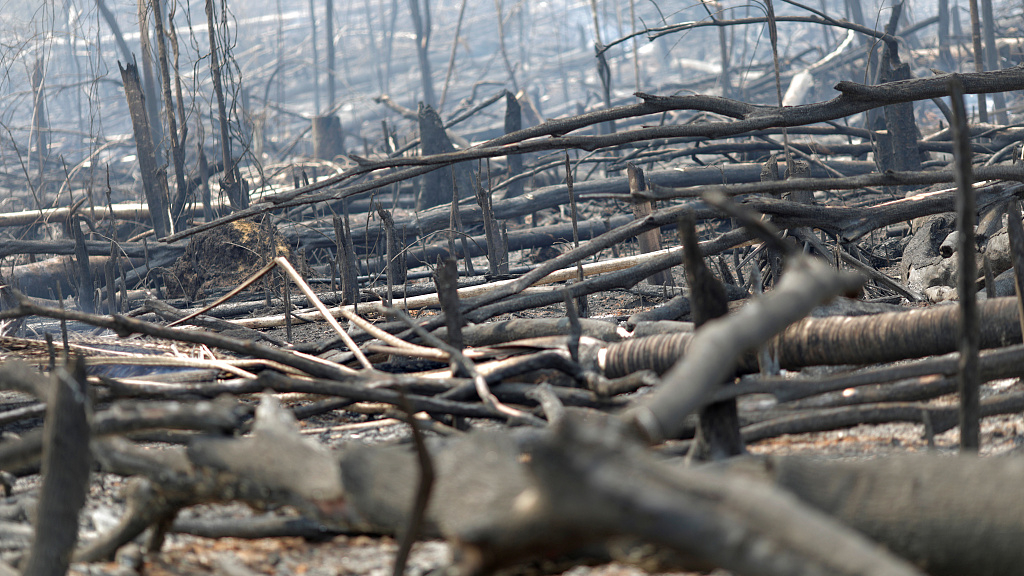
VGC Photo
How bad is Amazon deforestation?
According to data quoted by CNN from the National Institute for Space Research (INPE), an 80 percent increase in deforestation has occurred so far this year compared to last year. Another set of data quoted by the BBC shows deforestation was 278 percent higher in July 2019 than in the same month of the previous year. According to preliminary satellite data from Brazil's space agency, trees were being cleared at the rate of five football pitches every single minute. According to the Guardian, scientists say this year could be the first for 10 years in which 10,000 square kilometers of the Amazon forest are lost.
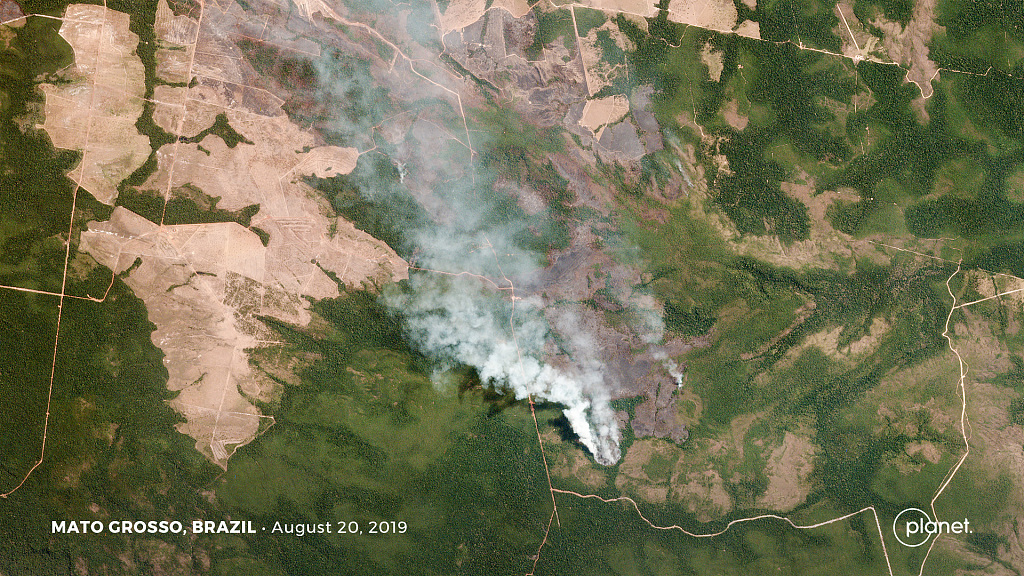
This satellite picture from August 20, 2019 shows smoke and fires in Brazil. You can also see how much of the forest is lost in the pictures. /VCG Photo
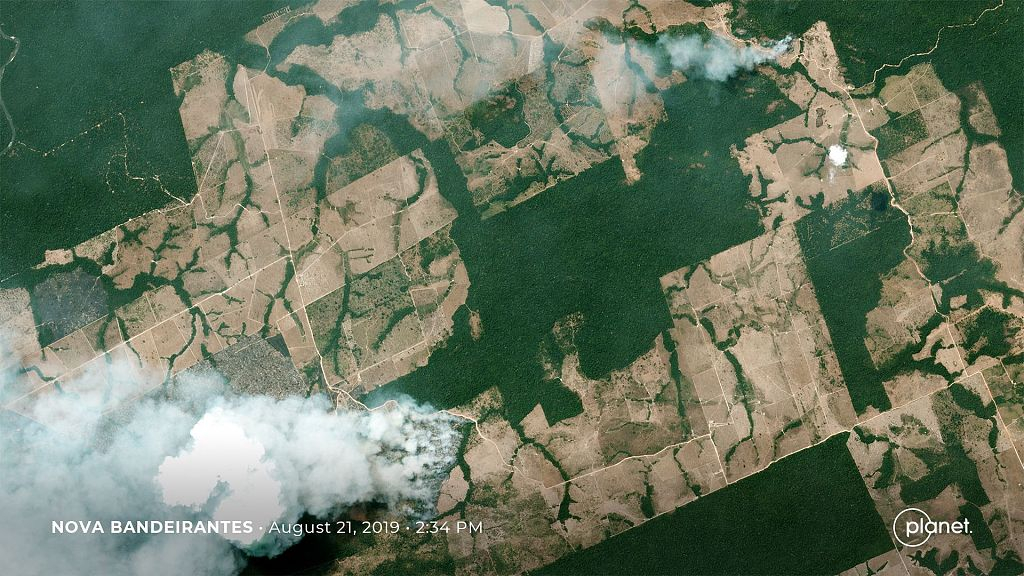
VCG Photo
How bad are the fires?
Though Amazon fires are not as rare as many may assume, the problem in 2019 has been highly aggravated. According to INPE, nearly 73,000 fires were recorded between January and August. This is the highest number since 2013, and strikingly surpasses a total of 39,759 fires recorded in the first eight months of 2018. The astronomical figure means more than one-and-a-half soccer fields of Amazon rainforest are being destroyed every minute of every day.
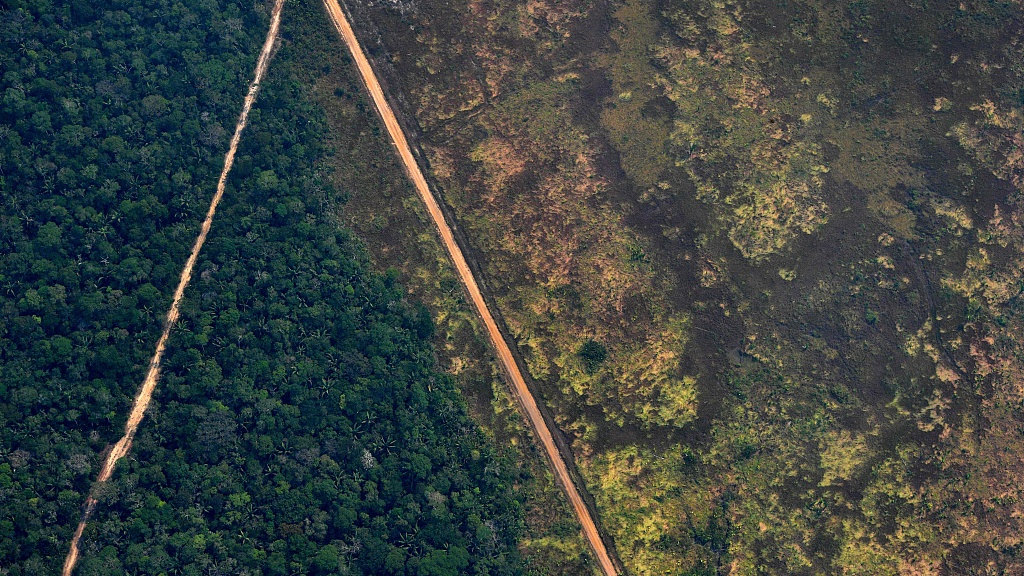
An aerial picture shows a deforested piece of land in the Amazon rain forest near an area affected by fires, about 65 kilometers from Porto Velho, in the state of Rondonia, in northern Brazil, on August 23, 2019. /VCG Photo
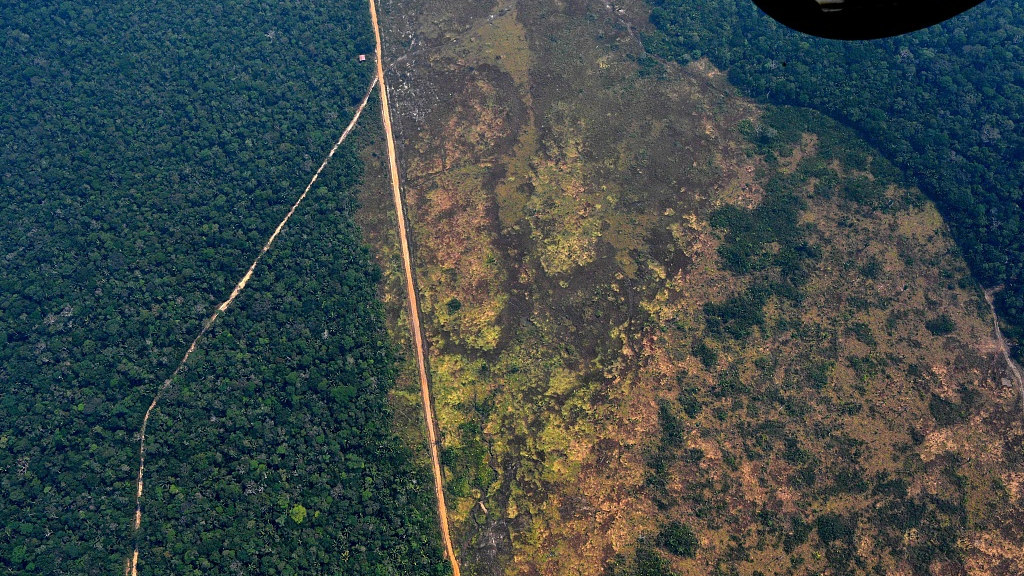
VCG Photo
Who should be held responsible?
With the Amazon fires making international headlines, the Brazilian President Jair Bolsonaro, who came to power at the beginning of the year, has been widely criticized over his anti-environment strategies. Based on INPE data, the rate of deforestation by July 2019 was nearly four times as high compared to a year earlier.
(Cover image via VCG)
(If you want to contribute and have specific expertise, please contact us at nature@cgtn.com)

Copyright © 2018 CGTN. Beijing ICP prepared NO.16065310-3
Copyright © 2018 CGTN. Beijing ICP prepared NO.16065310-3